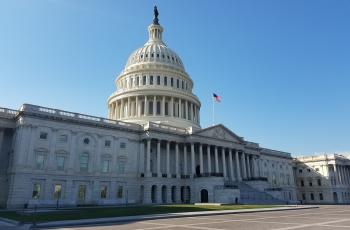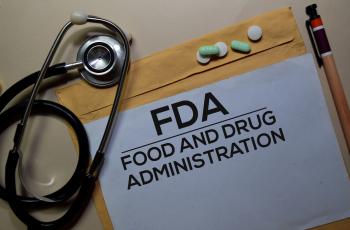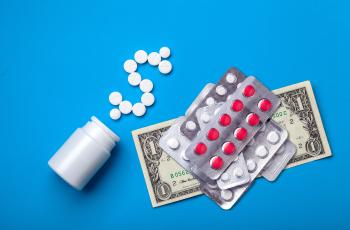How the American Rescue Plan Helps People with Diabetes
People with diabetes have been disproportionately impacted by the COVID-19 pandemic. The American Rescue Plan, the third COVID-19 stimulus package, will help people with diabetes through health care, nutrition, and public health interventions.
On March 11, President Biden signed the third COVID-19 relief package, the American Rescue Plan, which included $1.9 trillion in stimulus payments, health care aid, food assistance, and other benefits. While the relief package is for all Americans that are struggling during the pandemic, several parts of the law will help people with diabetes in particular.
COVID-19 has disproportionately impacted people with diabetes who are more likely to experience serious symptoms and complications. As diabetes is more prevalent in communities of color, diabetes health disparities have exacerbated the COVID-19 pandemic in Black, Indigenous, Hispanic, and Asian populations. The main causes of such disparities in diabetes are factors such as income, unemployment, health insurance, and access to food and exercise. Pandemic-related job loss, among other factors, worsened diabetes disparities and limited the basic needs of people with diabetes including healthcare and nutrition.
Before unpacking this piece of legislation, here are a few key terms that are important to know:
- Premium: Similar to paying rent, premiums are the amount you pay for your health insurance every month. In addition to your premium, you usually have to pay other costs for your health care, including a deductible, copayments, andcoinsurance.
- Deductible: Deductibles are the amount you pay out-of-pocket for covered health care services before your insurance plan kicks in. Afterwards, you typically only pay a copayment or coinsurance for health services.
- ACA: The Affordable Care Act (ACA), enacted in 2010, aimed to make health insurance more affordable and accessible. The ACA marketplace is where people without insurance can go to learn about the different government health insurance plans. According to a study from the Journal of Diabetes Care, the ACA covered 1.9 million people with diabetes in 2019. Read more about the ACA here.
- SNAP: The Supplemental Nutrition Assistance Program (SNAP) provides food and nutrition benefits to eligible individuals and families. Read about SNAP eligibility here.
- WIC: The Special Supplemental Nutrition Program for Women, Infants, and Children (WIC) provides funding for states to serve low-income pregnant, postpartum, breastfeeding women, infants, and children up to age 5 by providing nutritious foods, information on healthy eating, and referrals to health care. WIC eligibility varies by state, so check your state’s websites here.
Health Insurance
During the pandemic millions of people lost their health insurance, leaving themselves and their families without the insurance we all need to protect us from unaffordable medical bills. The relief bill contains several forms of health insurance benefits that aim to make care more accessible for people who cannot afford government health insurance or who are uninsured:
Temporary increased subsidies for people buying healthcare through the ACA marketplace: The COVID-19 relief package made marketplace insurance more affordable. According to the Centers for Medicare & Medicaid Services (CMS), premiums for eligible people will decrease, on average, by $50 per person per month. Some eligible individuals may see even greater savings.
To qualify for this benefit, people will need to sign up at healthcare.gov or their state website.
Temporary increase in Federal Medicaid Assistance Percentage (FMAP) under state Medicaid plans: The relief bill encourages states to expand their Medicaid programs by providing financial incentives to states that have expanded Medicaid. Medicaid expansion helps to provide healthcare coverage to more low-income Americans by including individuals at up to 138% of the federal poverty level.
Medicaid expansion has proven to have a positive impact on diabetes management and has helped low- and middle-income people with diabetes to access quality healthcare. If the 12 states that have not expanded Medicaid were to do so, millions more Americans could access quality and affordable diabetes care. Read more about the benefits of Medicaid coverage here.
Preserving COBRA health benefits: The Consolidated Omnibus Budget Reconciliation Act of 1986 (COBRA) lets you keep your employer-based health coverage if you lose coverage due to job loss, reduction in work hours, or other life events. Normally, people have to pay up to 102% of the premium to keep their employer coverage. But if you lost healthcare coverage during the pandemic, the government will pay for the full cost of your COBRA premiums for six months (from April through September 2021). If you missed the original 60-day enrollment window, you can still go back and enroll in COBRA. You should review coverage plans to determine whether COBRA or the ACA marketplace is the best option for you.
COBRA would help recently uninsured individuals afford their employer-based health insurance through September 2021. To view FAQs about this COBRA assistance, look here. To read more about who qualifies for COBRA, click here.
Nutrition
With so many schools closed due to COVID-19, too many children who depend on school meals are going hungry. Rising unemployment has further contributed to increased rates of food insecurity during the pandemic.
People with diabetes are disproportionately food insecure, yet they need a balanced and nutritious diet to adequately manage their health. Food insecurity is especially harmful for people with diabetes because it can force people to purchase foods that are cheap, but lacking in nutrition. Fortunately, there is food assistance available in the COVID relief bill, including increased SNAP and WIC benefits. Learn more about food insecurity and diabetes here.
Here is how the American Rescue Plan addresses the high rates of food insecurity in the wake of the pandemic:
Increase in SNAP benefits: Through the relief bill, a 15% increase in SNAP, formerly known as food stamps, will be extended through the end of September 2021. According to the US Department of Agriculture (USDA), this increase will provide a total of $3.5 billion to people experiencing food insecurity, or an additional $28 per person, per month.
Many households who use SNAP are also receiving food assistance under the Families First Coronavirus Response Act’s emergency SNAP allotments. The current Administration announced that it would aim to improve the emergency SNAP benefits to reach the lowest-income households. Under this new policy, according to the USDA, “households who had not been receiving payments and those whose payments were less than $95 per month will receive increased benefits.” You can apply for SNAP benefits here and search for approved SNAP retailers here.
Continued pandemic-EBT through summer: The pandemic-EBT program (P-EBT) was created as part of the US government response to the COVID-19 pandemic. It provides food benefits to families that lost access to free or reduced-price school meals as a result of school closings. Under the program, families approved for free or reduced-price meals receive the nutritional and financial value of missed meals through an “EBT card,” similar to a SNAP benefit card. The relief bill has allowed P-EBT to last through September 2021, including the summer months when children are not in school. For P-EBT, aid will be sent to eligible families with children already receiving free or reduced school lunch, so enrollment is not required.
Improving and expanding WIC: The bill includes $880 million allocated to WIC to increase benefits to state agencies for four months (between now and September 30, 2021) and to improve outreach and program modernization. Normally WIC provides food benefits of $9 monthly for children and $11 monthly for women, but the bill offers funding for an increase of up to $35 per month.
Modernization and outreach funding will help ensure that more women and children who qualify will enroll in WIC. Prior to the pandemic, WIC reached only about half of eligible women and children. To help more women and children get the nutritious foods they need, the bill has provided funds to modernize WIC’s enrollment and recertification processes. WIC helps children get nutrition early in their lives when it is especially important. As a result, WIC can help reduce the risk of obesity, a strong predictor of diabetes. These improvements in WIC could help individuals and families with diabetes management and prevention by providing support to maintain a nutritious diet.
Public Health Investments
Community health centers provide affordable health care to under-insured, uninsured, and overall underserved populations. These centers are all the more necessary during a time when so many people have lost their health coverage. The American Rescue Plan provides funding to improve medical assistance during the pandemic.
The relief package also allocates funds to expand health centers’ operational capacity beyond the pandemic. These investments would ensure that health centers are getting the resources they need to adequately help vulnerable populations. The expansion and improvement of public health care can help address health inequities, including those in diabetes, in the long term. For state-by-state breakdowns on how this funding is being distributed, click here.
Looking Ahead
The COVID-19 pandemic has not affected everyone equally. COVID-19 has disproportionately affected people with diabetes, while exposing the health disparities that have always been the reality for underserved communities.
Thanks to the American Rescue Plan, there is currently government aid for people who are struggling, though most of it is not permanent or even set to last another year. While vaccines can help end the COVID-19 pandemic, there is no vaccine for diabetes. Going forward into post-pandemic life, sustained and effective public health strategies and broader policy enactment should continue working to bolster healthcare in the US and to address diabetes health disparities.


